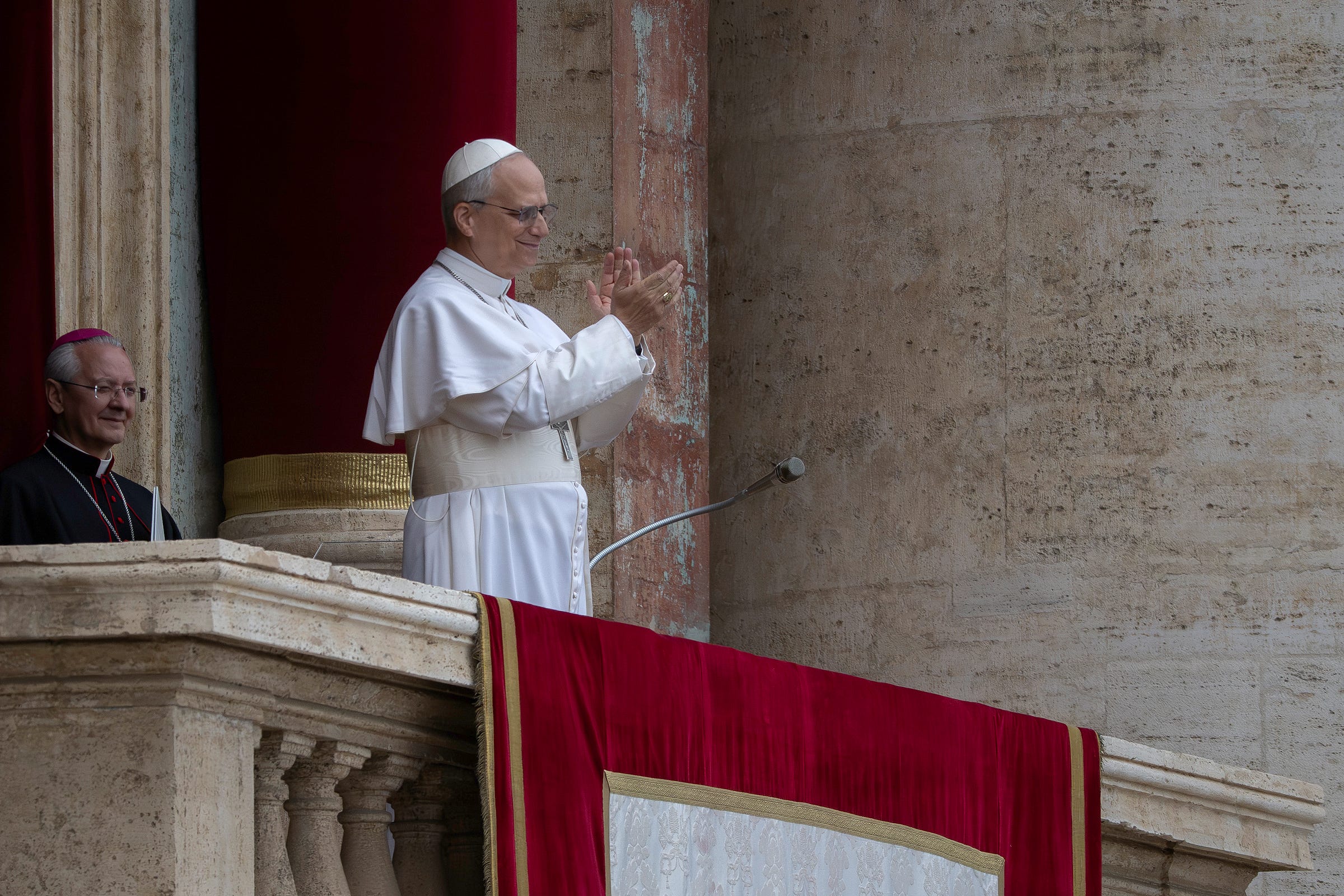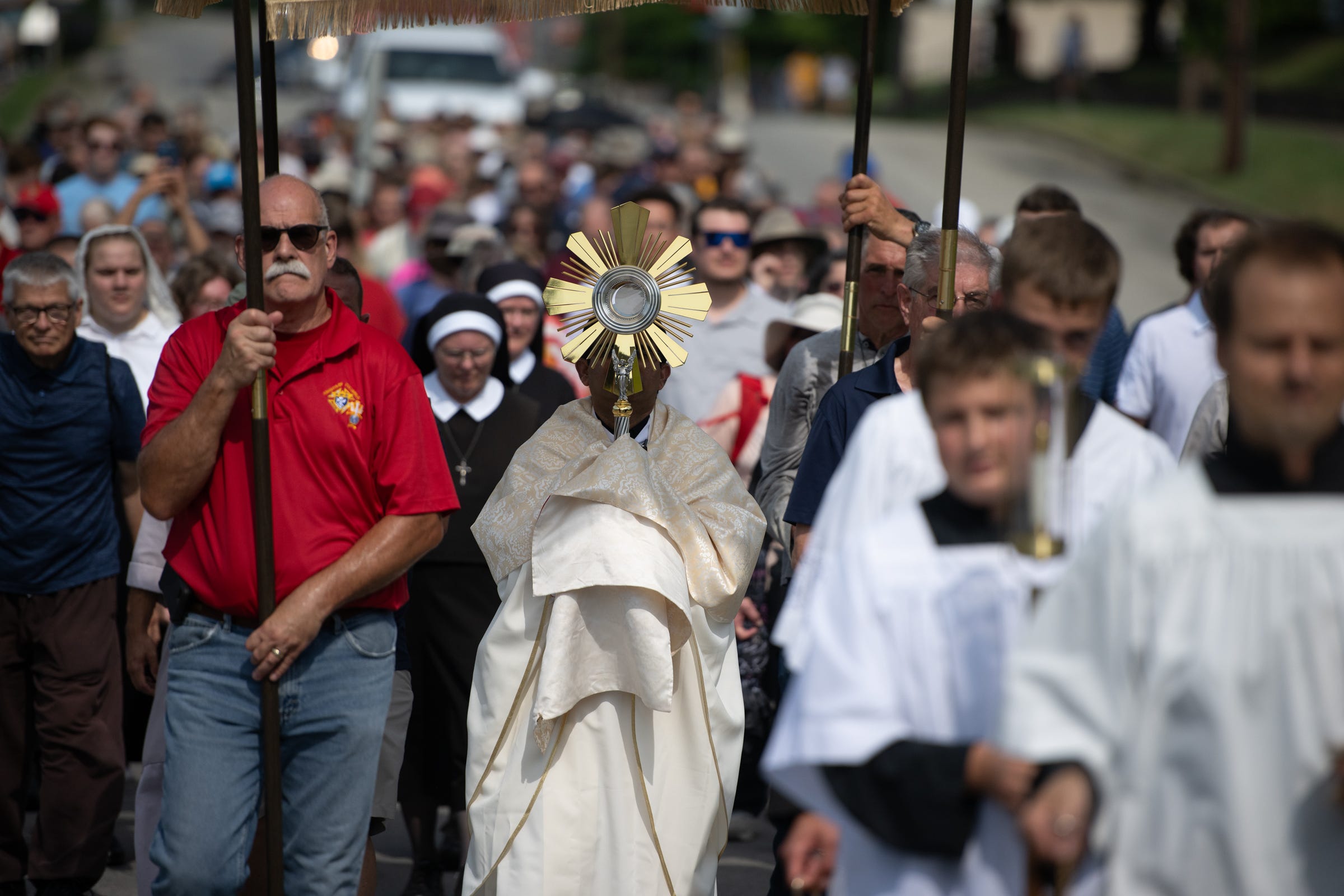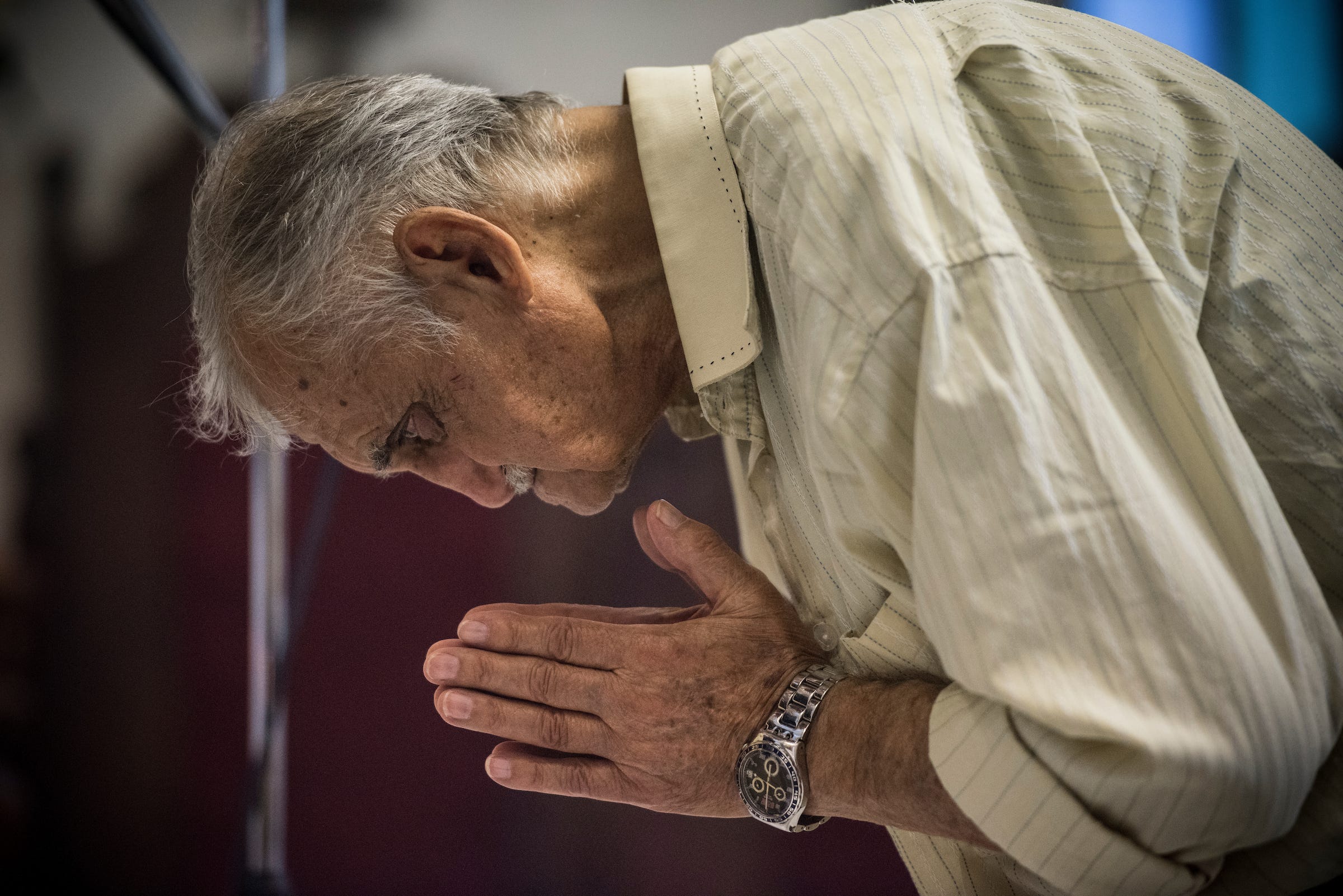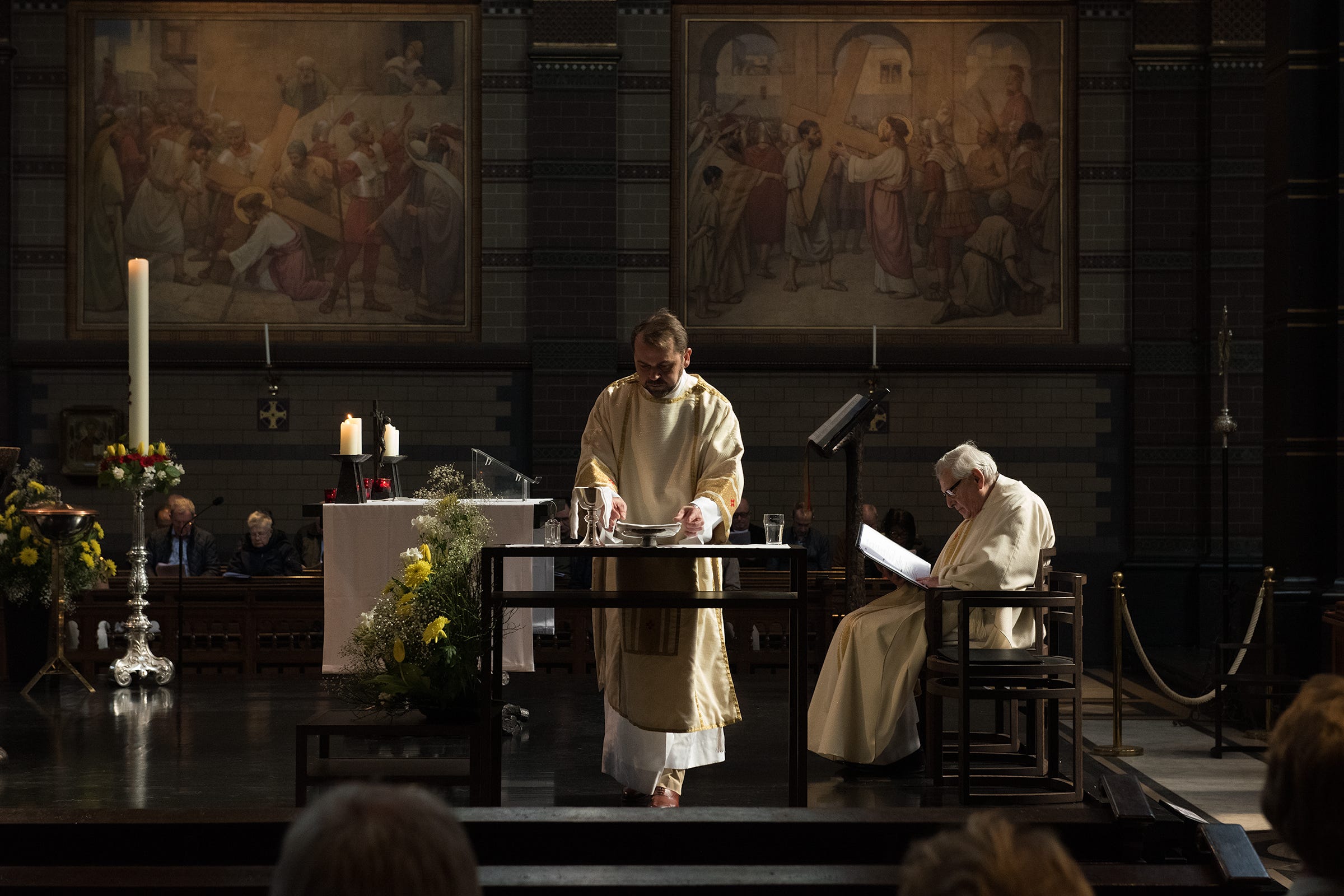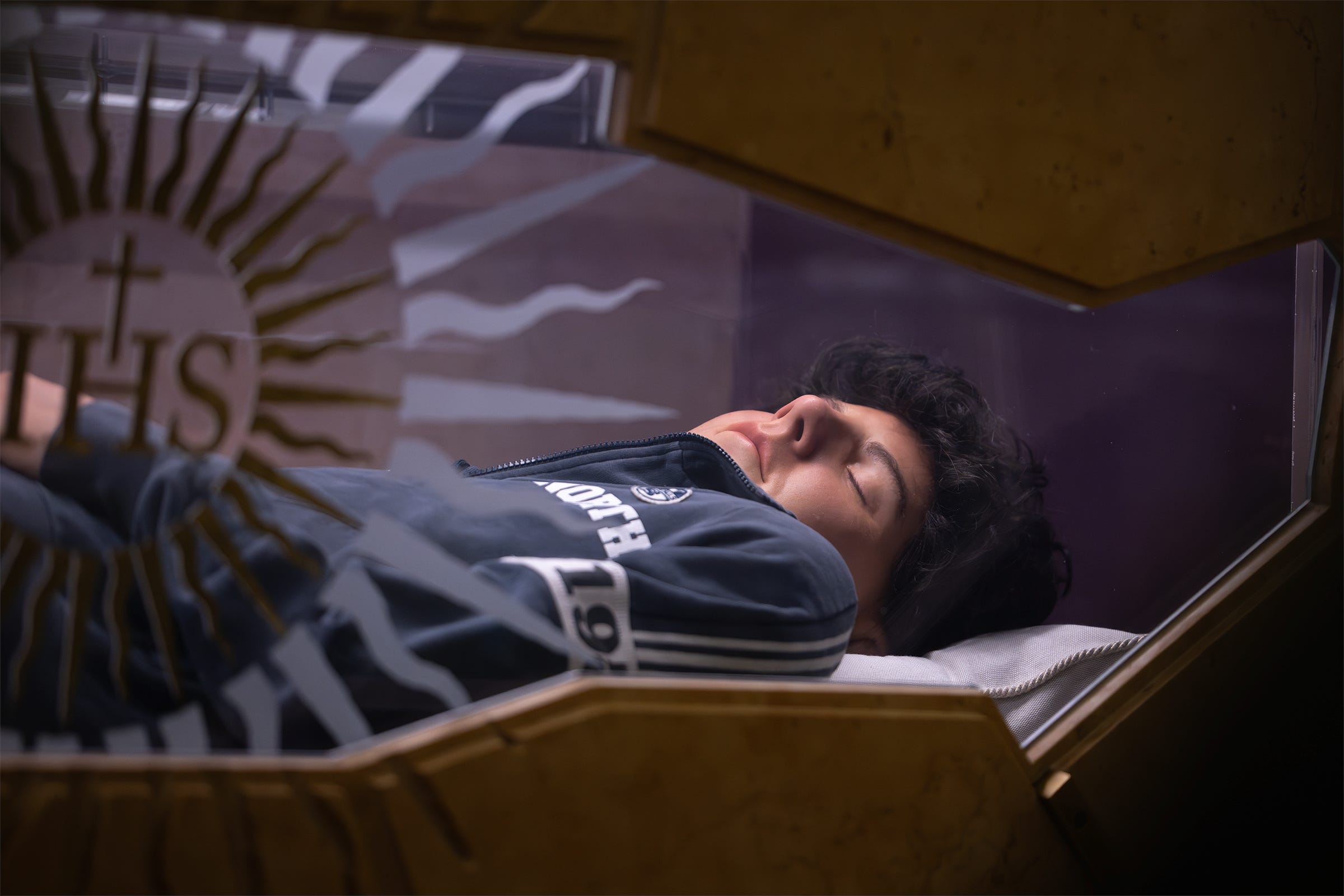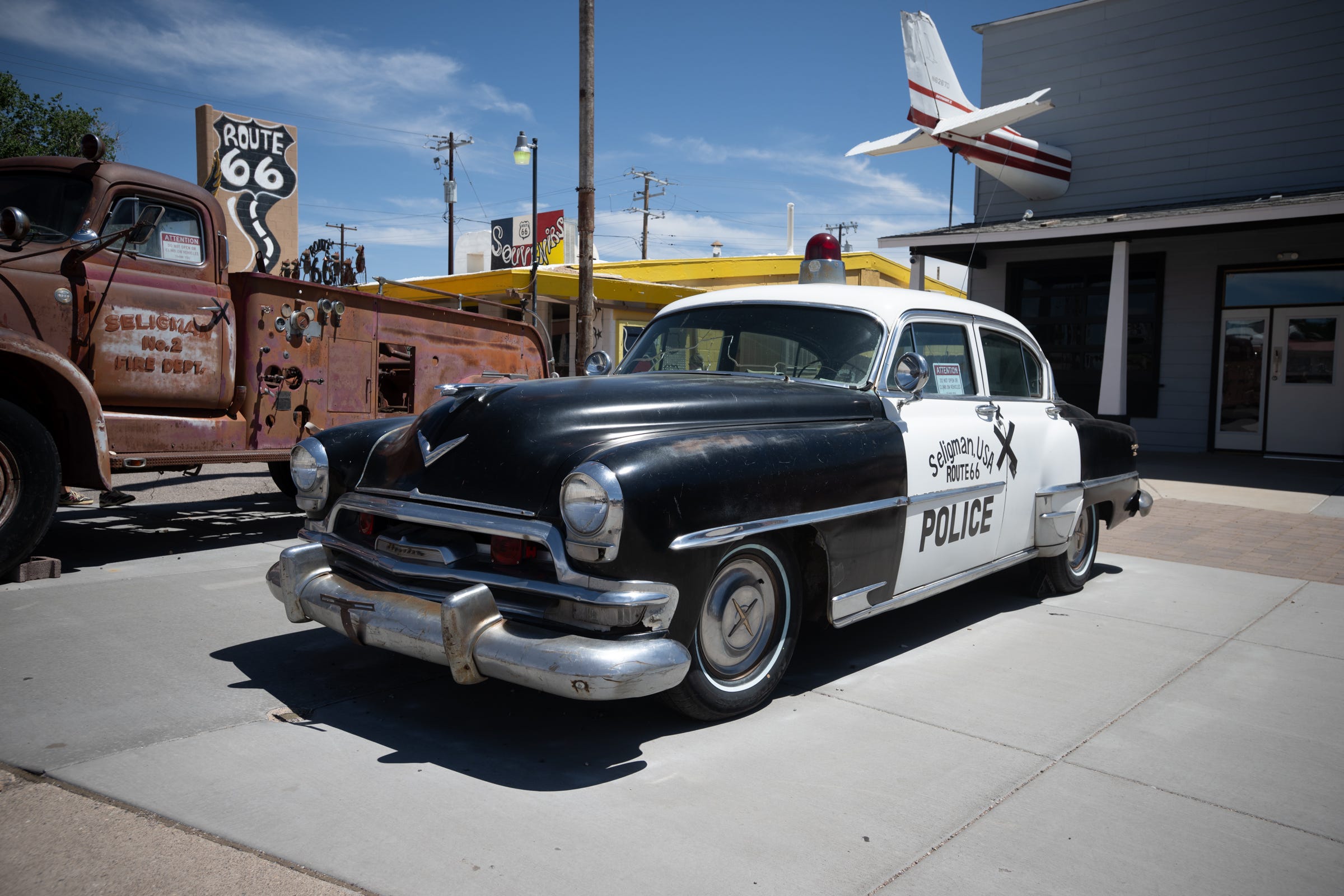Street Level V. 4 : Back from the Road, Back to the Heart
Two thousand miles, too many fast food wrappers, and a front-row seat to a Church on the Rise
I'm back.
Well, at least physically.
Twelve days of planes, trains (that I waited at the crossing for), and definitely automobiles—over two thousand miles behind the wheel and what felt like as many hotels.
And what a priceless gift it was. Thanks to Montse Alvarado, Shannon Mullen, Josie and Kara at EWTN and the Register… and YOU.
Not unlike last year, I had to pinch myself when I landed in Phoenix. I would be following the National Eucharistic Pilgrimage across highways and byways. Through city streets, across scorching deserts, and into the heart of a beautiful people, with a love story grounded in His creation—and made perfect by His grace: the Navajo Nation.
The hardest part of coming home from a journey like this?
Regaining balance.
And believe me, that's a real thing. For anyone who's ever romanticized the life of a photojournalist, allow me this: it's romantic to everyone… except the one doing it. It's a grind. A car knee deep in fast food containers, coffee cups, and a never fully packed or unpacked suitcase. It's uncomfortable and it’s lonely.
And that's exactly as it should be.
The solitude and discomfort break you free of the ghosts of days gone by, the problems back home, and force you to be completely in the moment. An observer in search of the meaning of what lies before your senses.
The work becomes an unscripted pilgrimage for one. A rare, disorienting, breathtaking experience that's hard to explain… and harder to leave behind.
Which is why coming home is like trying to catch your breath.
It's not for everyone, and I'm often trying to figure out what I'm doing out there, but I keep going back..
But it's summer here at the shore, and it's a good time to be home. The windows are wide open, welcoming the warm (well, hot) bay breezes, bringing the kind of contemplative solace—daydreams, wishing the season would never end—as the siren song of the sea calls from off in the distance.
But alas, I'm stuck in my tiny office whittling down the list of things I put off while on the road.
And somewhere around item #49 on my post-travel to-do list: publish a new edition of Street Level.
And so, here we are. As I dove into the stories of the Church this week from around the globe, I found myself wishing I could be at every one of them. From the early defining moments of Pope Leo XIV's papacy to the faithful processing through Portland's streets, from the martyrs of Damascus to the young saints soon to be canonized—the Church continues to move, to suffer, to celebrate.
But perhaps that's what we all feel. Thanks to those who covered the stories, we catch a glimpse. Thanks to the Spirit, we see the Truth.
So without further ado—let's begin on the streets… with Pope Leo, and the Feast of Corpus Christi.
The New Pontificate
Pope Leo XIV Leads First Corpus Christi Procession
For the Solemnity of Corpus Christi on June 22, Pope Leo XIV led a grand Eucharistic procession through Rome's streets—his first time celebrating this feast as Pope. The historic significance wasn't lost on the thousands who lined the route from St. John Lateran to St. Mary Major, many holding banners welcoming the Church's first American pontiff.
After Mass at his cathedral, the Pope carried the monstrance in procession, accompanied by throngs of faithful rejoicing in the Real Presence of Christ in the Eucharist. According to Vatican News, Pope Leo declared in his homily that "Christ is God's answer to our human hunger, because his Body is the bread of eternal life."
But it was his call to action that revealed the pastoral heart already emerging in these early weeks of his pontificate. He urged Catholics to "share the bread" of God's gift with others—meaning both literal charity and sharing the hope of the Gospel—in order to "multiply hope and proclaim the coming of God's Kingdom."
Reflecting on the miracle of the loaves and fishes, the Pope said Jesus satisfying the hungry crowd prefigures how He saves everyone from the deeper hunger of sin and death. Leo XIV noted that where Christ reigns, "we are set free from all evil," and that our task is to carry Jesus to the world: "Strengthened by the food God gives us, let us bring Jesus to the hearts of all."
Rome's streets became a moving cathedral, as the Pope presented the Blessed Sacrament "before the eyes, consciences, and hearts of the people," reminding the city that Christ walks with us today.
You can see some great photographs by Antoine Mekary here.
Pilgrimage and Procession
LA Eucharistic Pilgrimage Finale Scaled Back Amid City Unrest
Due to escalating tensions and protests across Los Angeles, the final public procession of the National Eucharistic Pilgrimage's western route was canceled and moved onto private grounds. According to Catholic News Agency, the event was originally planned to be held in downtown LA, culminating with Mass and a major festival. However, out of safety concerns, Church leaders made a last-minute decision to relocate all activities to the campus of the Cathedral of Our Lady of the Angels.
Despite the change, the pilgrims processed reverently within the campus grounds, with Archbishop José H. Gomez presiding over a smaller yet deeply prayerful celebration. He called for peace in the city and emphasized that "Christ must be our guide now more than ever."
Some faithful expressed disappointment over the scaled-down public witness, though many understood the need for caution. One attendee, a local catechist named Rosa, told CNA: "We didn't get the big celebration we hoped for, but we still received Jesus—and that's what matters."
Read more at the Catholic News Agency
Thousands Join Eucharistic Procession Through Portland's Streets
In an uplifting public witness of faith, over 3,000 Catholics took to the streets of Portland, Oregon on Sunday, June 22 for a major Eucharistic Procession led by Archbishop Alexander Sample. According to Catholic News Agency, the sizable turnout in this famously secular northwestern city was truly remarkable—and by the archbishop's account, even historic.
The preparation alone told the story of a community hungry for public witness. To encourage broad participation, the Archdiocese scheduled a special 2 p.m. Mass at the cathedral, timed so that parishioners from across the city could attend their local Sunday Masses and then converge for the procession. By noon, hundreds of people were already lining up, eager to worship together. Confessions were offered in multiple languages—English, Spanish, Vietnamese, Korean—to serve the diverse crowd as they prepared their hearts.
After Mass, the vast procession wound through downtown Portland, with more than 20 priests, 8 deacons, over 100 altar servers and seminarians, and dozens of religious sisters and Knights of Columbus accompanying the Blessed Sacrament. Onlookers witnessed hymns, prayers, and an atmosphere of joy and reverence overtaking the city streets.
But it was Archbishop Sample's emotion that captured the day's significance. In his homily, he couldn't hide his feelings, calling it a "turning point" for the local Church. "So many see the Pacific Northwest as a center of darkness. I wish they could see this," he said, noting that having the Eucharist at the center of evangelization gives him "hope for the future."
He even quipped, "I wish Pope Leo could see this," emphasizing how proud he was of his flock's public faith—a comment that carried special weight given the new pontificate's emphasis on Eucharistic witness.
The archbishop believes the Holy Spirit is igniting a revival in western Oregon. For a city often in the news for unrest or unbelief, the sight of thousands proclaiming Christ's presence was a bold counter-witness—one local Catholic’s hope will bear spiritual fruit long after the final Benediction.
Read all about it at the Catholic News Agency
Suffering and Witness
Martyrs of Damascus: Honoring the Fallen After Church Bombing
In the heart of Damascus, the faithful are reeling from terror.
On June 22, 2025, a suicide bomber struck the Greek Orthodox Mar Elias Church in the Dweila district during evening prayers. According to Reuters, at least 20 people were killed and 52 injured when the attacker opened fire and then detonated an explosive vest. Syrian authorities confirmed the bomber was affiliated with the Islamic State, and it marked the first successful suicide bombing in Damascus since the political shift last December.
According to the National Catholic Register, approximately 350 worshippers were present when the bomb detonated.
Reports indicate a second assailant may have opened fire from the doorway before the blast, suggesting a coordinated strike. The force of the explosion shattered pews and stained glass while authorities sealed off the church to investigate.
Religious leaders reacted swiftly. The Latin Patriarchate of Jerusalem condemned it as “an unspeakable evil” and reaffirmed the right to worship in peace. Pope Leo XIV also sent words of consolation, honoring the victims as “witnesses to Christ’s love in the midst of hatred”
Read the full story at the National Catholic Register
New Beginnings
Pope Leo XIV Ordains 32 New Priests on Sacred Heart Feast
In a jubilant Vatican ceremony that seemed to embody the hope of the early Church, Pope Leo XIV ordained 32 men to the priesthood on June 27, the Feast of the Sacred Heart of Jesus.
According to Vatican News, St. Peter's Basilica was packed with thousands of clergy and faithful as the diverse group of new priests—hailing from over 20 countries including Nigeria, India, Mexico, Vietnam, and Uganda—lay prostrate before the altar built above St. Peter's tomb. The image was striking: men from every continent surrendering themselves completely before the successor of Peter, their faces pressed to the marble floor where so many saints had walked.
The Pope's message to these newest shepherds revealed his vision for the priesthood in the 21st century. He urged the ordinands to "love God and your brothers and sisters, and give yourselves to them generously," encouraging fervor in celebrating the sacraments, prayer—especially Eucharistic adoration—and pastoral service.
He highlighted the inspiring legacy of holy priests throughout the Church's 2,000-year history, reminding them that many became martyrs, missionaries, and champions of charity. "Cherish this treasure," he told them, "be inspired by their zeal, and invoke their intercession."
Read all about it at the Vatican News
The Dutch Church’s “Creative Minority”
Hope Rises Amid Secularism in the Netherlands
Despite Catholicism’s diminished footprint in Dutch culture (just 3.4 million Catholics in a population of nearly 18 million), Cardinal Eijk sees signs of renewal—particularly among the young. “Every year we see a growing number of young people asking for admission to the Church,” he told EWTN. What’s surprising? Many of these seekers come from families disconnected from the Church for generations, and they’re encountering Christ not through tradition, but through TikTok and YouTube.
These aren’t surface-level conversions either. Eijk says they arrive with a surprising grasp of Church teaching and an eagerness to live it fully: “They’re not big in numbers, but they’re strong believers.”
He calls them a “creative minority,” borrowing a phrase from Benedict XVI and historian Arnold Toynbee. It’s the idea that small, courageous communities—firm in faith—can shift the course of culture. That resonates deeply for anyone paying attention to our times.
After decades of decline, Cardinal Eijk sees modest revitalization. As someone who’s walked the canals and pews of the Dutch Church, I can tell you—it’s a hope worth holding onto.
Read the full story at the National Catholic Register
A Heatwave of Grace in Florida
In the Diocese of Orlando, Hundreds Step Forward to Enter the Church
As reported by Florida Catholic of the Diocese of Orlando, over 800 people were recently chosen as Elect during the Rite of Election on March 9, 2025—a record for the diocese. The Basilica of the National Shrine of Mary, Queen of the Universe was so full, the diocese had to hold two separate celebrations to accommodate everyone.
“It’s the most joyful celebration we can have,” said Bishop John Noonan. Catechetical leaders across central Florida echo his excitement, pointing to a spiritual hunger that seems to be growing.
Behind every number is a name: a boy battling illness who finds strength in prayer… a U.S. Army vet whose empty heart was filled at Holy Redeemer Parish… a Southern Baptist who quietly fell in love with the Eucharist.
“This growth is not just statistical,” said one catechetical director, “it’s deeply personal.”
As one man put it: “I spent years apart from my Heavenly Father… now it’s time to make a firm commitment.”
Full story via Florida Catholic
Future Saints
Canonization Date Set for Blessed Carlo Acutis and Pier Giorgio Frassati
According to Catholic News Agency, Pope Leo XIV has officially announced that Blessed Carlo Acutis and Blessed Pier Giorgio Frassati will be canonized together on September 7, 2025, at St. Peter's Basilica in Rome.
The announcement came during a meeting with the Congregation for the Causes of Saints, and was met with joy across the Catholic world. Carlo, the Italian teen who used his tech skills to spread Eucharistic devotion, and Frassati, the young Italian outdoorsman who championed social justice and the poor.
Their stories couldn't be more different, yet more complementary. Carlo died of leukemia in 2006 at the age of 15, offering his suffering for the Church and for the Pope, his final months spent creating websites that catalogued Eucharistic miracles around the world. Pier Giorgio died in 1925 at age 24 from polio, contracted while serving the poor in Turin's slums, his pockets still full of IOUs from families he had helped when he died.
Their causes have long been connected by a shared spirit of youthful joy, deep faith, and concern for others—qualities that seem to be emerging as hallmarks of Pope Leo XIV's vision for modern sanctity.
As CNA reports, this joint canonization "underscores the Church's recognition of the modern call to holiness in every walk of life—whether through digital evangelization or social activism."
Bishop Robert Barron remarked in a statement that the timing is providential: "In a world starved for hope and authenticity, these two young men show us what real holiness looks like. It's not about perfection—it's about love."
The canonization will be the highlight of the Jubilee Year's fall calendar and is expected to draw hundreds of thousands to Rome.
Learn more at the Catholic News Agency
“Christ Is My Logic”
The World’s Smartest Man Just Went Viral—for His Faith
It’s not every day that the person hailed as the “world’s smartest man” makes headlines for proclaiming belief in Jesus Christ. But that’s exactly what happened on June 18, when South Korean scientist YoungHoon Kim posted on X:
“As the world’s highest IQ record holder, I believe that Jesus Christ is God, the way and the truth and the life.”
The post exploded—14 million views and counting—as reported by Catholic Herald. In an age where intellect often masquerades as skepticism, Kim’s bold declaration felt like a seismic shift: truth from the top.
At 36, Kim claims a verified IQ of 276—validated by high-intelligence societies like Mensa and the Giga Society, and confirmed in 2024 as the highest ever recorded. But he doesn’t seem all that impressed with himself. In fact, in a follow-up post, he wrote:
“I will use this opportunity to lead many souls to God.”
And to one commenter: “Christ is my logic.”
That line stopped me in my tracks.
Kim holds a degree in Christian theology from Yonsei University—something he calls one of his best decisions, believing theology is the “ultimate discipline.” He’s also the founder of NeuroStory, a cutting-edge AI brain health company, and has a hand in everything from international think tanks to high-IQ networks.
In a world obsessed with credentials, Kim points higher. And whether you agree with his politics or not, his message is clear:
Even the smartest man alive believes that Jesus Christ is Lord.
Full story at the Catholic Herald
Until Next Time…
And I'll end where I began.
Over the past few weeks covering the National Eucharistic Pilgrimage, I was able to put together a few new articles which I hope you were able to read (click the names to read). The journey began in the Navajo Nation, landed in Palm Desert, and passed through areas devastated by the most recent wildfires near the Pacific Palisades before arriving in Los Angeles.
I'll just say this.
Traveling across the United States and visiting parishes from deep in the farmland to deep in the inner cities has opened a window into the soul of the Catholic Church in America. For one thing, it's beautiful. For another, it's vibrant. And the reality? It's growing. Just as this young nation navigates its way into its adolescence, the Church, though timeless, is emerging within it.
So whenever you flip on the news, know this: somewhere in an Adoration Chapel, or a parish church, or behind the wheel of an automobile heading down Route 66 is a person praying for this nation—that it will turn its heart to Jesus Christ, and one day grow up to be the beacon of hope that it might be by His Grace.
God Bless,
Jeff
Thanks for reading! This is a reader-supported periodical. Your support is crucial. If you are able, please consider a paid subsciption or making a ‘Patron of the Arts’ donation of any amount. By doing so, you are not just supporting this effort; you’re a vital part of this mission.
You have my heartfelt thanks for your generosity and support and please keep me in your prayers, and know of mine for each of you. God Bless, Jeff



